MemoryMoon ME80 2.1 Review
The title of this article is a deliberate phrase of irony and antonymic word play. RE: "Real Virtual"
This old-skool Synthedit creation was one of THE MOST authentic-sounding Yamaha CS80 emulations ever made. Wait! Stop! This delightful nod to the golden age of analogue synthesis has been unfettered from it's original development platform. That's right, this sumptuous creation of 'filtery' prowess is now a bona fide compilation of native 64-bit code. For backwards compatibility sake, 32-bit builds are still available. Ringing in at $40 when purchased directly from the developer, this scrumptious delicacy of coding is also bundled with Mixcraft Pro Studio 7.
The CS80 was an expensive unit when it was released in late 1976, costing upwards of $8000, but it could never actually be accused of being “versatile”. It had some very distinct sounds; notably the huge brass and delicate, ambient strings. MemoryMoon’s ME80 is verily dripping with those distinctive tones. ME80 not only emulates the sounds of the original hardware that it is modeled after, but it realistically reproduces the famous polyphonic “aftertouch” which the Yamaha CS80 was so greatly prized for.
Brief History:
Enter MemoryMoon ME80:
Right off the bat, let me tell you this reviewer feels that the MemoryMoon ME80 is to Yamaha what TAL’s U-NO-LX is to Roland – very faithful emulation! If you’re a connoisseur of classic, vintage analogue synths, then you owe it to yourself to give ME80 careful attention and due consideration. If we were still back in 2008 – 2010, many ITB synth players and home producers wouldn’t have a problem with the fact that MemoryMoon’s incredible synths are written in assembly language and snugly wrapped in a cool, retro Synthedit shell. Let’s not forget that untold numbers of huge chart-topping hits were produced using Pro Tools; versions 7, 8, 9 and 10! Alas, since the middle of 2011, the viability of 64-bit production environments has been brought to the foreground, with only a backwards mentality, er, I mean a backwards compatibility mindset for 32-bit plug-ins. *Cheeky Grin. Thank goodness that this is no longer the plight in regard to ME80. If you’re a classic synth lover, you owe it to yourself to get a hold of this one and start enjoying the 1980s bliss inherent in ME80. Hint: Perhaps a more expensive CS80 virtual synth would be better. Is it worth the bother? Abso-freakin-lutely! Man, just ‘listen’ to this thing. If this one doesn’t invoke Blade Runner-like nostalgia, then nothing ever will. Huge bass. Smooth glissando. Lush, slightly drifting warmth. Pools of richly modulated dual oscillation. This is it, baby! The ME80 doesn’t simply emulate a CS80, it would seem that MemoryMoon have venerably captured its essence and assimilated it as a VSTi (*Virtual Studio Technology Instrument) Gunnar Ekornås and his band of merry men released ME80 a few years ago, but it never really did have as many night flares set off for it as it well-deserved. You may even think that this review is a couple of years too late, to which I reply, nonsense! ME80 is as relevant to classic synth fans, as a ’69 reissue Strat is to lead guitarists. Great is great, man, and greatness never fades away. (For example, 2000 years later, Jesus still rocks!) When I reviewed the original (32-bit only, synthedit wrapped) ME80, I asked Mr. Ekornås if there were a 64-bit version planned for the future, and he told me that MemoryMoon was trying to figure out the best way to make it happen. To quote Mr. Ekornas:
The Yamaha CS80 was responsible for many a touring roadie’s nightmares; the blessed thing weighed over 200 lbs. It wasn’t only the heavy plywood case, solid wood sides and metal panels that made this analogue beast so weighty, there were also the large transformers, capacitors, PCBs, wiring, and metal heatsinks inside the case.
Most noted for its powerful, 8 voice polyphony and wonderfully analogue brass and string sounds, this expressive instrument was considered by many to be the first “great” synthesizer from Japan. This synth wowed the listener with its wide, exhilarating and ‘organic’ detuning. The CS80 hosted two powerful, analogue oscillators; each configured on a synthline. Each synthline afforded independent VCA and VCF operations. There were high and low pass filters included for each VCF. Finally Yamaha’s interesting “Ribbon” controller was a new, unique method of pitch bending. “These synths run on custom modules, so all modules must be ported to 64 bit too. Most of the modules come from Chris Kerry and use assembly language, which is forbidden by Microsoft in 64 bit. Without assembly code, the synths would use higher CPU.”
Unfortunately, as all good ASM programmers have found out, it’s not possible to compile 32 bit ‘assembly’ code as 64 bit. If however, the code was painstakingly reproduced in C++, or some other low-level OOP language, it *is doable.
We clearly see the fruits of Chris and Gunnar's labour well manifested. This review-writer for one, is truly thankful they've done so.
Installation and Authorization:
A demo version of ME80 is available for download. If you haven’t already got it tucked away somewhere on your hard drive, I highly recommend that you do so. The nice little VST (64 or 32-bit) dll and accompanying data folder is safely delivered in a little ol’ 6 MB zip file. Stop reading . . . go get the demo. Link is here: MemoryMoon ME80 Demo. Once you’ve downloaded the zip file, you will need to manually extract the files and move or copy them into your VST folder *Gasp! ‘By hand’. That’s it. You’ve finished. No registration, no serials, no nuthin’. Finito. Cool, huh? I honestly wish that every single plug-in ever made were this easy to “install”. 5 STARS! [ *Anti-Piracy Rant ] Nasty orcs stealing software on the internet make it a pain-in-the-noodle for we honest guys n’ gals. I say: “Tie em’ down and stick a couple of iLoks up their nose . . . that’ll learn em’.” In the meantime, if you observe software piracy – report it. Not only does piracy harm developers, it devalues the "honest-paying" customer’s hard-earned purchase.
Visuals:
Authentic retro vibe is the story drawn out for us here. All the charm and weighty presence of late 70s ‘synth-i-ness’ is accurately depicted in this GUI. As a matter of fact, each of MemoryMoons fabulous VA synths looks decidedly authentic. The ME80 is available in two models. The sound is the same in each of them, but the graphics differ. The default skin definitely resembles the appearance of the original hardware; however, the default graphics do look a little dated. No, I don’t mean that they match the period; I mean that they look a little . . . well, ‘clunky’. (Just a little, mind you) I feel that the default ME80 interface is a wee bit cramped and that some of the GUI elements are slightly cludgy-looking. Perhaps the developer could increase the size of the interface; especially the height. It seems to me that the fader paths are a little too short. I would also recommend that the slider caps be slimmed down a tad. This is such a wonderful-sounding synth and it deserves to look its very best.
Ah, but there is an excellent alternative offered by MemoryMoon - Enter Mr. Scott Kane’s “High Tech” skin. It may not be quite as true-to-form as ME80’s original interface, but it is easier to distinguish. The high tech skin is reminiscent of a CS80 from say, 1980, as opposed to an original 1976/77 model. It retains much of the original hardware’s motif and is in no way a blatant deviation; rather, it is a slightly more contemporary design. The “High Tech” skin pays homage to its hardware inspirer and makes the synth more attractive while yielding easier parameter maneuverability. 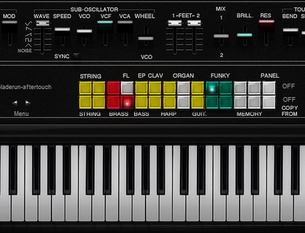
Active preset switches are more easily seen on the “High Tech” interface.
Each of the sliders and knobs responds very smoothly to mouse movements; it’s practically impossible to ‘overshoot’ with these controls. For even more refined parameter changes, the standard “shift-click” feature is in place. My one peeve, however, is there doesn’t seem to be any means of resetting a slider or knob to a default zero-value.
As seen on the original hardware, each group of controls is sectioned off and clearly defined. Each synth line has four sections. These are: VCO, VCF, VCA, and Touch Response. The Oscillators (VCO) offer sliders for controlling VCO speed, Pulse modulation, and pulse width. There are also two rocker switches to turn square and saw waveforms off or on. Lastly, there is the noise fader. The VCF control section sliders provide control over High pass filtering, Resonance, Low pass filtering, voltage initial level, Attack level, and of course the familiar ADR sliders (Attack, Decay and Release). VCA sliders are contained in the next control section. These are the standard ADSR variety along with a VCF Level slider and a volume level slider. The VCF slider determines how much of the preceding VCF level comes into the VCA. Touch Response is where much of the famous CS80 “feel” is configured. This section provides “Initial” Brilliance and Level as well as “After” Brilliance and Level faders. Each synth line has its own independent Touch Response controls. To realize the best performance and player-experience, a fully polyphonic, aftertouch enabled keyboard is highly recommended. [ Performance Settings ] Underneath the synth lines we have the Pitch tuning, Detuning, Ring Modulation, Sub Oscillator and Octave settings ( “FEET” per synth line). Over on the right side there are sliders for tweaking the high/low filter cutoff points and independent level controls for lower keys and higher keys. These individual levellers may be necessary since the original CS80 operated with aggressive filter-scaling. The sub Oscillator may be assigned any one of six common synth waveforms including “brown” noise. These include typical Sine, Saw, Ramp, Pulse, and Triangle. [ Presets & Effects ] The fourth ‘lane’ of controls are where we find configuration options for Delay, Reverb, and the bright, funky square late 70s-styled preset buttons. The Delay rate can be dialled in by hand, or it can be automatically synced to the DAW/Host temp. The syncopated choices range from ½ to 1/16th notes. There are also quarter dotted notes, and triplets in ¼ or 1/8ths. The “Right 2X” button will force doubled delay times for the right-side channel. The Presets menu is easily seen where it is situated in an open area between the Delay knobs and the two rows of unmistakable Preset Selectors. A robust collection of well-made presets is delivered with ME80 and are intelligently categorized in Lead, Riff, Pad, Bass, FX, Keyboards, and General categories. At the very least, these presets make for excellent catalysts from which the user can create his/her own unique sounds. As per the original hardware’s factory design, two rows of brightly colored, square, preset buttons; 14 per row. Each row assigns factory-preset to each synth lane respectively. There are 2 buttons per row for saving user-created presets. The factory presets include two String types, two Brass/Horn types, Bass, EP, Clav, Organ, Funky and Harp. The pleasant-sounding, usable built-in reverb must be enabled for the ‘Delay’ to be activated. The synth grants reverb Level, Size, Decay, and Damping knobs. 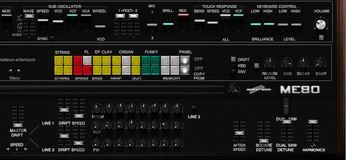
By default, the “Keyboard” view greets the user, but there are two additional hidden panels. The first of these is the “Drift” panel. Here, there are three sets of 8 knobs available to the user for changing the “doubled SAW” waveform and the degree of “Drift” for each of the eight voice cards for both synth lines. Specifically, the upper set of buttons is assigned to general pitch, the second row is dedicated to the VCF section, and the last set is for shaping the drift of Pulse waves.
A small button to the left of the button rows lets the user select synth line 1 or synth line 2. The speed of the drift is variable from 1/100th of a second to 40 cycles. This area also houses two pairs of sliders by which the user can control the level and speed of the drift; one pair for each synth line. To the right side, there is another grouping of sliders for tweaking square wave detuning (common to both synth lines) a switch to engage a 2nd saw wave (again, common to both synth lines), Dual SAW wave detuning, and a harmonics slider. The latter allows the user to add harmonics to a triangular sine wave. The ENV (Envelope) panel button displays the current VCF & VCA shapes. These shapes are for display only.
Sound Quality:
Oh yeah, baby! We’re finally getting to the good stuff now. It’s the ‘sounds’ that ME80 faithfully recreates that makes an ol’ skool guy like me sit up and take notice. This is not some sort of amateur, “first-attempt” programming effort. This is a solid chunk of dense, well-refined digital gold. Naturally, this latest version sounds very similar to the original emulation, but I'm pleased to hear subtle audio improvements. There are fewer aliasing artifacts and the overall sound quality has also benefited from the recompilation.
With the ability to add additional square waves, and varying degrees of pulse wave width and modulation, ME80 can get ‘sick’ thick. Phat doesn’t cover it – the old analogue synthesizers could get so thick that you couldn’t fit the notes into a warehouse loading dock. Add in some Double-SAW detuning, and you’ll risk busting the housing of your headphones.
And oh, the fizzy-fuzzy noise that this code contraption can emit through an audio interface is searing, deep and rich. The noise faders will let you add some gritty color without losing the ‘musical’, analogue warmth. This is great for putting some ‘vibe’ into pulsing bass lines. The robust combinations of high/low pass filter per synth line facilitate a ridiculously wide range of control over tonal shapes. These can even be set up to resound with deliberate, in-your-face presence, or be softened to lulling, smooth ambient pad tones. The VCF resonance offers wide sweeps and can be used to create effective, evocative sounds for various musical formats and moods. Regardless of what waveform you select, ME80 retains that wonderfully nostalgic, analogue-like sound we fondly remember from the era it harkens to. The open, spacious-sounding delay and reverb effects are wide, lush and pleasing to the ear. While the reverb may not exhibit the quality of a $150 speciality ambience plug-in, it is by no means an embarrassment! The effects are not obnoxious nor do they suffer from any nasty “pingy” or “metallic” ugliness. These time-delay effects also exude the analogue-like warmth of the era. Rounding off the effects, ME80 hosts lovely, smooth Glissando, Portamento, Tremelo and Chorusing. The Yamaha chorusing effects were never as fondly embraced as their Roland rivals, but still, they are quite nice. Again, this synth is not trying to sound like a Roland or an Arp – it’s a faithful emulation of the famous Yamaha CS80. One small peeve that I have with this type of synth, is that the “Speed” and “Depth” controls are shared by both the Tremolo and the Chorus effects. It would be nice if each effect were configurable individually. I suspect that the inclusion of a good quality oversampling feature would benefit this already good sounding synth. The higher register can get a wee bit harsh-sounding if the user isn’t judicious with the Low-pass filter. The lows sound exquisite; they are warm and rich. Overall, the sound of this $40 synth is worth every penny of its price; and then some. The sound quality does not disappoint. The ME80 is a realistic-sounding emulation of the vintage, analogue synth it faithfully honors.
CPU Consumption:
As far as quality VSTi synths go, this one is very gentle on CPU cycles. Most nearly any up-to-date computer should be able to host this instrument on a dozen or more tracks simultaneously. 5 BIG, BRIGHT STARS! Concluding Remarks: I sincerely hope and pray that all of the fabulous MemoryMoon synths can be recompiled as 64-bit in the foreseeable future. It would be disappointing indeed if such lovely works of sonic art were discarded and left behind in the digital dust. If the instruments themselves cannot be brought into the 64 bit DAW world, then I sincerely hope that some genius-at-large develops a means by which these high-quality Synthedit VSTIs can be invisibly “translated” for 64 bit DAW environments.
As a side note, I would like to make honorable mention of the superb bit-bridging functionality that the development team over at Acoustica have come up with. This new wonder is included in Mixcraft 7.1. Throughout my tests, the bridger is most nearly 'invisible' in operation. It requires only minimal CPU overhead and its memory management is highly optimized. Alas, it's not available as a purchasable 3rd party utility.
:: PROS - Recompiled as native 64-bit. - Realistic-sounding, faithful Yamaha CS80 emulation. - Extremely affordable. - Decent quality interface that closely resembles the original instrument (especially the High Tech skin). - Authentically recreates the famous CS80 “Aftertouch”. - Built-in preset management featuring a good variety of sound types. - Exceptionally smooth, easy-to-adjust knobs and sliders. - Excellent GUI layout. - Easy-to-use & Easy-to-learn. - User’s manual available in PDF. - Friendly, proactive product support. - Light on CPU due to well-coded ASM programming. - No dongles, call/response challenges, nor invasive piracy protection overhead. :: CONS - Windows only – no OSX version available. - A quality oversampling feature would be nice. For this and other MemoryMoon synths, visit the developer's web site. http://www.memorymoon.com
Brother Charles is a freelance writer, Gospel music artist and minister. Charles had been a professional touring musician during the nineties; working primarily as a lead guitarist in the Canadian country music industry. Brother Charles is also involved with music production and quality home recording.
12 Comments
6/6/2013 04:48:09 pm
Looks great, and I dig the sounds! I just wish I could use it on OSX...
Reply
Bro. Charles
7/11/2013 05:53:45 pm
Thanks, Christopher. It is a nice looking synth and it truly is a very good sounding instrument. I sincerely pray that the developer can find a way to port it to 64 bit and OSX someday. Unfortunately, Synthedit and Synthmaker apps are pretty much precluded from OSX - at least for now.
Reply
Isbuck
12/3/2013 01:40:41 am
Works very well in Reaper 64 bit. Gunnar is aware of this - it seems that Justins 64/32 bridge in Reaper is a lot better than that in Cubase (and others)
Reply
Indy Steve
12/16/2014 06:34:57 am
I like your review. For folks stumbling about the now year-and-a-half old review on the web, as of when I write this 12-2014, version 2.0 of ME-80 has been on sale for several months. The new edition is 64 bit AND cross-platform MAC-Windows. I like the old version well enough that I haven't seen fit to update to the new version. ME-80 is also bundled if you get the pro version of the Mixcraft DAW (around $150) Mixcraft was just updated to version 7.0, entering the 64 bit era with this release.
Reply
Bro. Charles
12/16/2014 05:46:18 pm
Thanks for commenting, Steve. Just an FYI, but I am planning on making special mention of ME80-2 in my upcoming review of Mixcraft Pro Studio 7.
Reply
Niels
4/3/2015 08:13:03 am
I am thinking of building a vsti-player, because i like vst above hardware synths. I have the Arturia version but when i have some components, this version will be added for comparison. Thanks for your review.
Reply
Bro. Charles
4/23/2015 12:06:07 pm
Thanks for the feedback, Niels. I'm confident that you will find that the latest version of the ME-80 v2 will compare very favorably to Arturia's CS80-V. :)
Reply
Frank
1/23/2016 11:56:58 am
yeah, while the ME80 may sound more like a CS-80, the Arturia CS-80 seems to sound more like a GX-1. Much bigger and more vibrant.
Mike
5/12/2015 03:47:54 am
I already have the earlier versions of the ME80, Messiah and Memorymoon VST's, but cannot find any updated version download links for them on the Memorymoon website; except for the purchasing links... and Gunnar's email link doesn't open up my email program when I click on it to try to ask him about it. Can anyone steer me in the right direction.
Reply
1/22/2016 01:24:08 pm
Sounds like a steal at $40. How does it compare to Arturia's CS-80v?
Reply
Skrie
3/1/2017 02:13:42 pm
It blows away Arturia's CS-80.
Reply
Kris
11/17/2016 04:50:28 pm
Guys do you know if there is any sound compare test of me80 and real cs80? I'd like to hear both synth playing some tones and melodies.
Reply
Your comment will be posted after it is approved.
Leave a Reply. |
NO SPAM! IK Multimedia Group Buy
FX Pick & Mix Group Buy - up to 16 for the price of 1
Will You Help?Web hosting is getting more and more expensive all the time, and Reviewer's Revival is NOT funded nor supported by any commercial enterprise or business. A donation of any amount is greatly appreciated. Even $2 or $3 for a coffee - every little bit helps. Thanks very much.
Legal BlurbAll of the articles published on Reviewer's Revival are undertaken to be purely objective, impartial reviews. Reviewer's Revival is not owned, funded-by, nor hired by any company or individual. Reviewer's Revival is the sole property of, and solely under the discretion and direction of Brother Charles. |

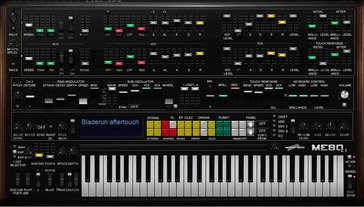
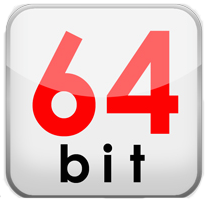
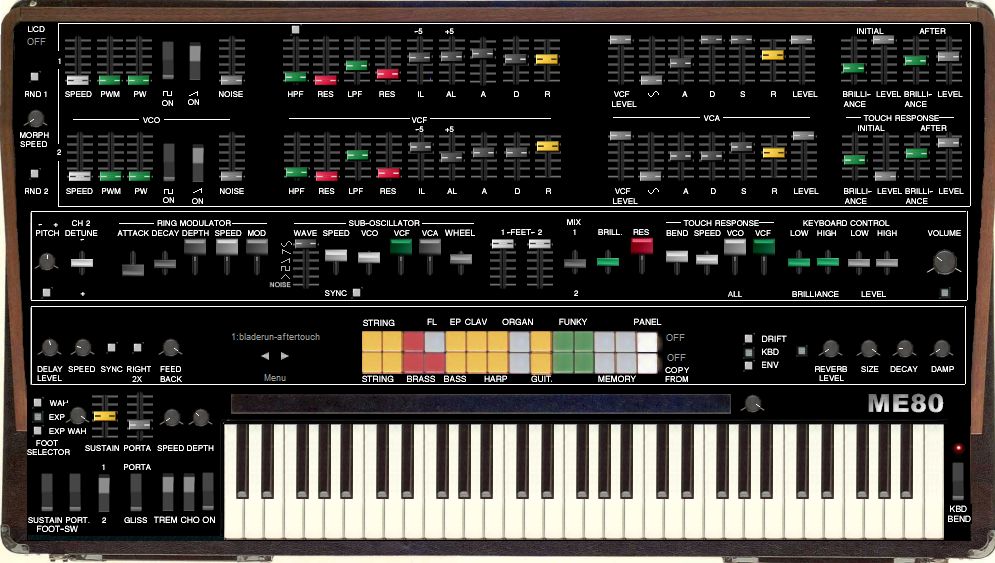
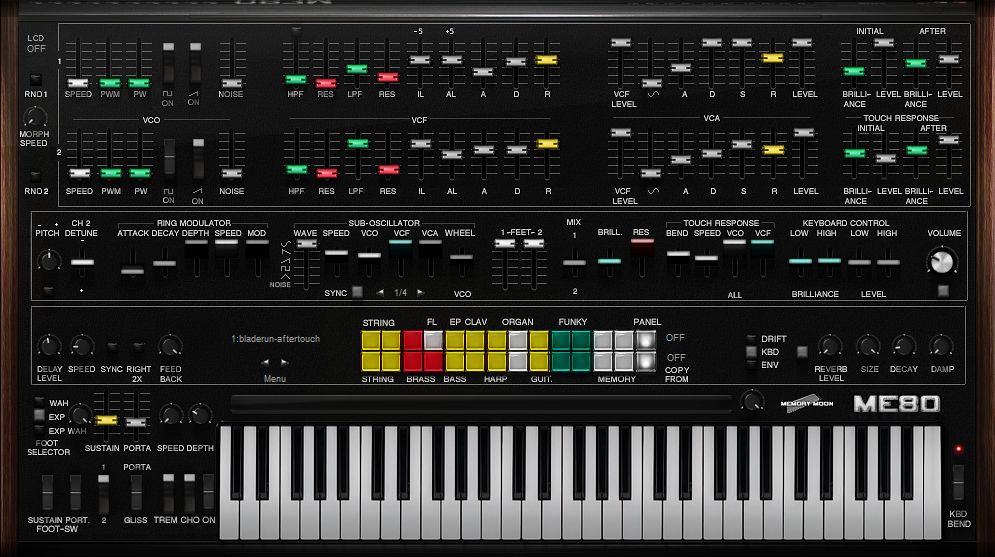

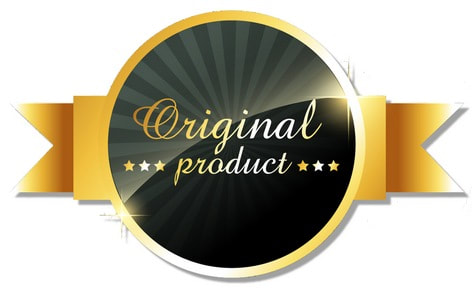

 15% OFF Summer Sale!
15% OFF Summer Sale!
 RSS Feed
RSS Feed

